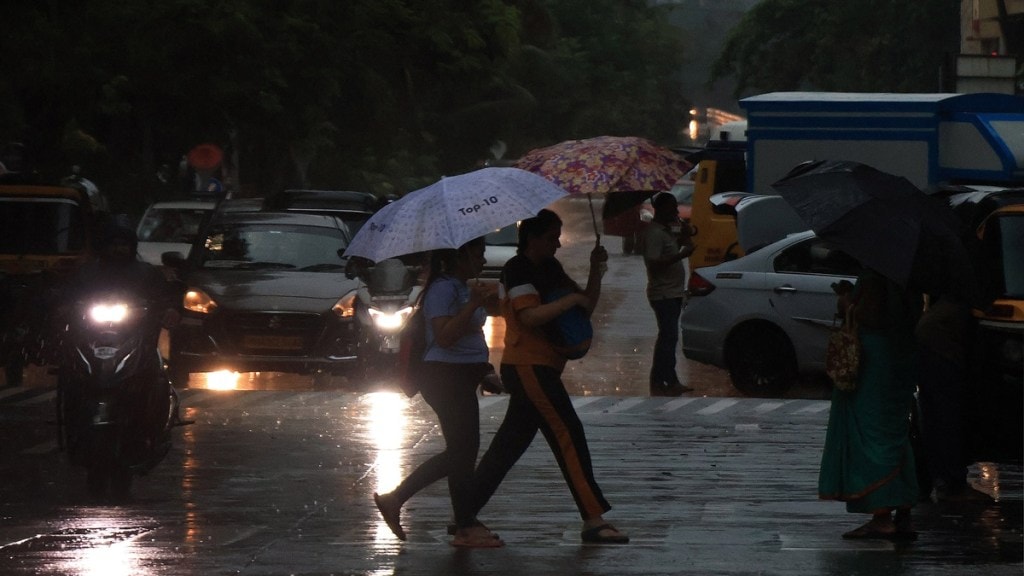By Anjali Marar
The monsoon core zone, which covers much of India’s rainfed agricultural land, is expected to receive above-normal rainfall this year. This prediction is not just crucial for agriculture, but also offers a clue to the monsoon estimates for the entire country, explains Anjali Marar
What is the significance of the monsoon core zone?
The monsoon core zone (MCZ) is located in central India and spans the region defined by 18 to 28°N and 65-88°E, including parts of Madhya Pradesh, Chhattisgarh, Maharashtra, Odisha, and nearby areas. Since rainfall variation across India is not coherent, it is not the all-India average rainfall but the rainfall over the MCZ that is used to define active and break phases in the monsoon. Active and break phases are integral components of the monsoon system and are characterised by distinct meteorological conditions. During the active phase, rainfall is typically high over the MCZ and south peninsula, and mean sea-level pressure is low. During the break phase, these conditions are reversed. Rainfall across the MCZ is coherent and strongly correlates with all-India summer monsoon rainfall. Thus, the MCZ is a critical region for studying interannual rainfall variation in India.
This zone is also where major rain-fed agriculture is practised. All major kharif crops are cultivated across this zone, making it vital for the country’s annual crop yield. This year, the IMD has said MCZ is expected to ‘above’ normal rainfall and quantitatively 106% of the seasonal rainfall during June-September.
How is the rainfall over the MCZ interpreted by weather scientists?
One of the most prominent characteristics of the MCZ is that it supports the development of the monsoon trough — an important semi-permanent feature which largely regulates the rainfall activity over the country during June-September. The monsoon trough is a low-pressure area whose development is due to wind interactions between the Inter-Tropical Convergence Zone (ITCZ) and the cyclonic monsoon circulations. During the southwest monsoon season, the westerlies from the south and easterlies from the north converge and the point of convergence is called the monsoon trough axis that runs between Pakistan to the north (head) Bay of Bengal. Within the four-month monsoon season, there are triggers which lead to the north-south oscillation of this monsoon trough. When the monsoon trough is located to its normal or to the south of its normal position, most parts of the country, including the monsoon core zone and the southern peninsular India, receive good rainfall and the period is termed as ‘active’ monsoon conditions. When the monsoon trough shifts northwards from its normal position, the rainfall activity is shifted to the Himalayan foothills while major parts of India experiences dry or ‘break’ in monsoon conditions.
36 sub-division-wise rainfall forecasts for the first time
Starting southwest monsoon 2025, the IMD has introduced seasonal forecasts for 36 meteorological sub-divisions. As per the forecast, majority geographical regions of the country will receive above normal rainfall, except northeast and extreme north India. While below normal (seasonal rainfall below 91% of the Long Period Average [LPA]) is predicted for Arunachal Pradesh, Assam and Meghalaya, near normal (seasonal rainfall between 92-108% of the LPA) is expected in Nagaland, Manipur, Mizoram and Tripura, sub-Himalayan West Bengal, Sikkim, Jammu and Kashmir and Ladakh. For all remaining subdivisions of India above normal (seasonal rainfall above 109% of the LPA) is predicted by the IMD.
Though the IMD said that its seasonal forecast accuracy reduces with small geographical areas, nonetheless, the meteorological sub-divisional level forecast can help local administration, policy and planners, farmers and other stakeholders to make decisions in advance.
The IMD releases Long Range Forecast (LRF) in two stages: the first stage in mid-April and the second stage in late May.
How the new Bharat Forecasting System offers better localised forecasts
The Bharat Forecasting System (BSF) is the latest weather model adopted by the IMD and offers the finest spatial resolution of 6km. Developed by weather modellers at the Pune-based Indian Institute of Tropical Meteorology, this model is best for issuing short range (up to 72 hours) to medium range (up to 7 days) weather forecast. The previous 12km resolution model issued a single weather forecast for a 144 sq km area. But weather need not necessarily be uniform within this area. For instance, in New Delhi, rainfall recorded at Palam or Safdarjung is seldom close to what gets recorded at Ridge or Ayannagar stations. Likewise, Santacruz in Mumbai often records higher rainfall than the Met agency’s Colaba station. In Pune, Pashan station records higher rainfall than Shivajinagar and Lohegaon stations.
With the introduction of BFS, the IMD will now be able to better track rainfall variations or other weather vagaries at local or hyperlocal levels. Verification of BSF performance suggests there is a 30% and 64% improvement in capturing the extreme rainfall over all-India and CMZ, respectively.
Has accuracy of IMD forecasts improved?
Forecasting weather along the tropics is far more challenging than for those areas further away from the equator, simply because of greater variability in weather phenomena in the tropics. Similarly, it is relatively easy to predict large systems like the monsoon or a cyclone spread over large geographical areas rather than a thunderstorm, cloud bursts or a lightning, which are localised and their development sudden. Over the past decade, the IMD’s forecast accuracy has improved manifold across temporal scales, thanks to the enhancement in its weather observational networks along with improved computational and modelling abilities. Today, the IMD has a 97-99% probability of detecting a heat wave at least 24 hours in advance. The probability for a heavy rainfall event forecast, however, is less than 80%. Smaller the geographical area bigger the challenge to issue accurate and timely forecasts.Another significant improvement is in cyclone detection, prediction of its track, intensity and landfall.
The author writes on science and environment issues.
Disclaimer: Views expressed are personal and do not reflect the official position or policy of FinancialExpress.com. Reproducing this content without permission is prohibited.

